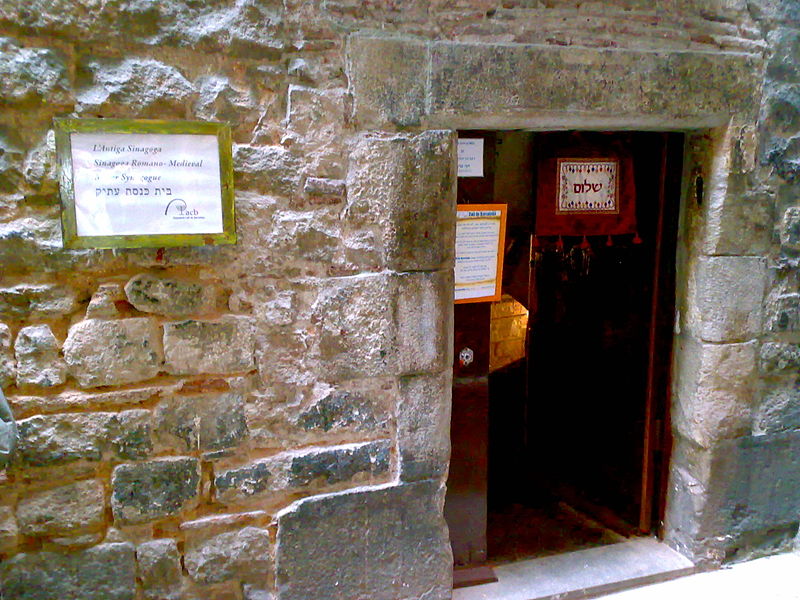
The Ancient Synagogue of Barcelona is located in the centre of the city. It is believed to be the oldest synagogue in Europe. Archaeological investigations show that the original structure of the building was built in the third or fourth century; whether this structure was the synagogue cannot be said with certainty. After many centuries of use for other purposes, the building was re-opened as a synagogue and museum in 2002. No congregation prays regularly at the Sinagoga Major, but it is used for festive occasions. The building was significantly expanded during the 13th century. Medieval Barcelona is known to have had several synagogues, and the main synagogue was certainly in the immediate area. King James, I visited the synagogue in 1263 at the conclusion of the Barcelona Disputation. Shlomo ben Aderet served as the rabbi of the Sinagoga Major for 50 years.
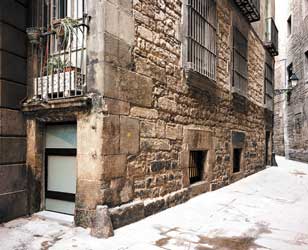
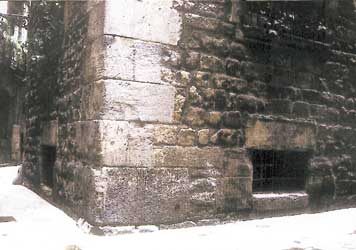
It is believed that the original building was freestanding. To the north, it adjoined with what was then Escola Mayor Street and to the east with Marlet Street. The building ran southerly along “de Les Dones” Street, where, in the 19th century a narrow edifice was built. To the west, there was probably an atrium, the site where later, around the 17th century, the stairs to the present-day building were erected. In the northern exterior wall, there is an effigy of Santo Domingo. Emblematic buildings in the Jewish Quarters were Christianized with the effigy of a saint. The bloodiest day in the history of Barcelona’s Jewish community was August 5, 1391. On that day, the day celebrated as Santo Domingo, the Quarters were attacked.
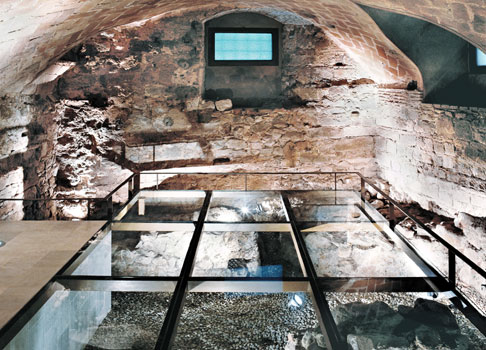
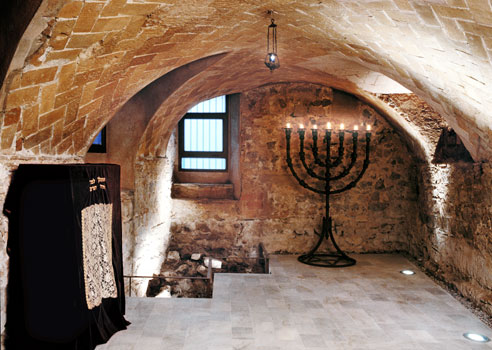
After the uprising, the street name was changed to Sant Doménec. The building, along with all of the community’s belongings, passed into the hands of the king.
We find ourselves before a building whose foundations date back to Roman times. In addition, there are superimposed high-medieval constructions and a central structure from the 13th century. Also visible are 17th-century modifications made when the upper-level apartments were built.
At the end of 1995, the former owner put the property up for sale. The space was to be utilized as a bar. Before this lamentable eventuality, Mr Laffa decided to purchase the property with the hope of bringing to light its historic past and preserving it from use that would not dignify its extensive past.
Thus began the collaboration between Mr Riera and Mr Laffa, with a common objective: to salvage a significant period of Catalan history from oblivion through the rehabilitation of the former Major Synagogue space.
